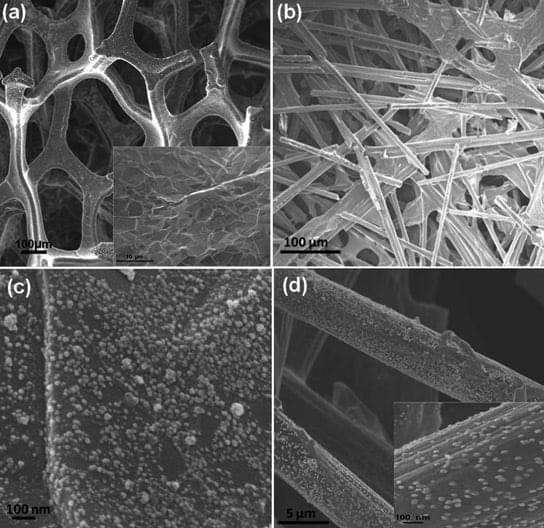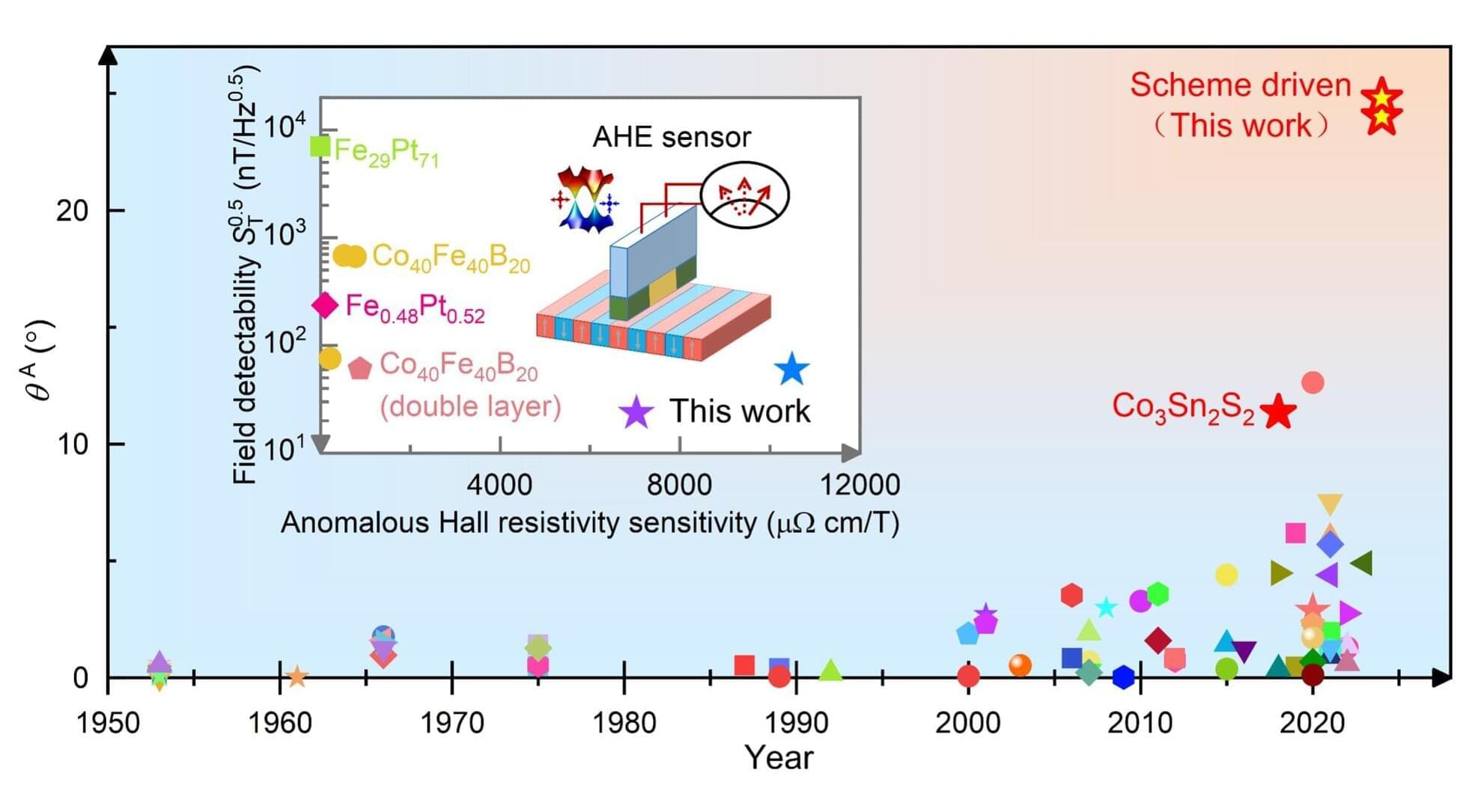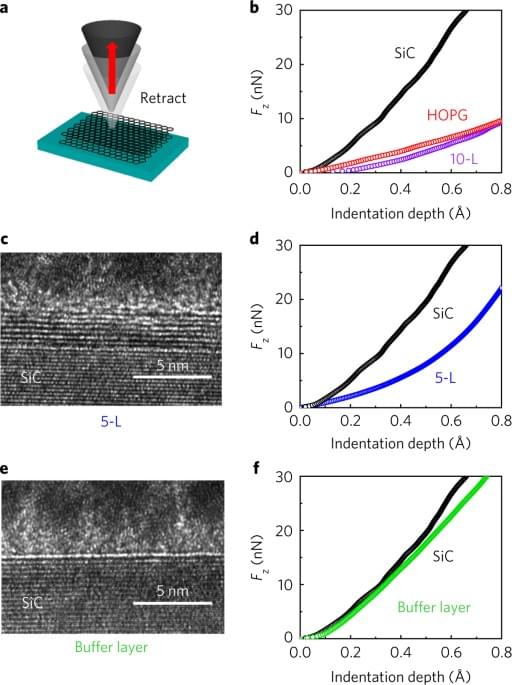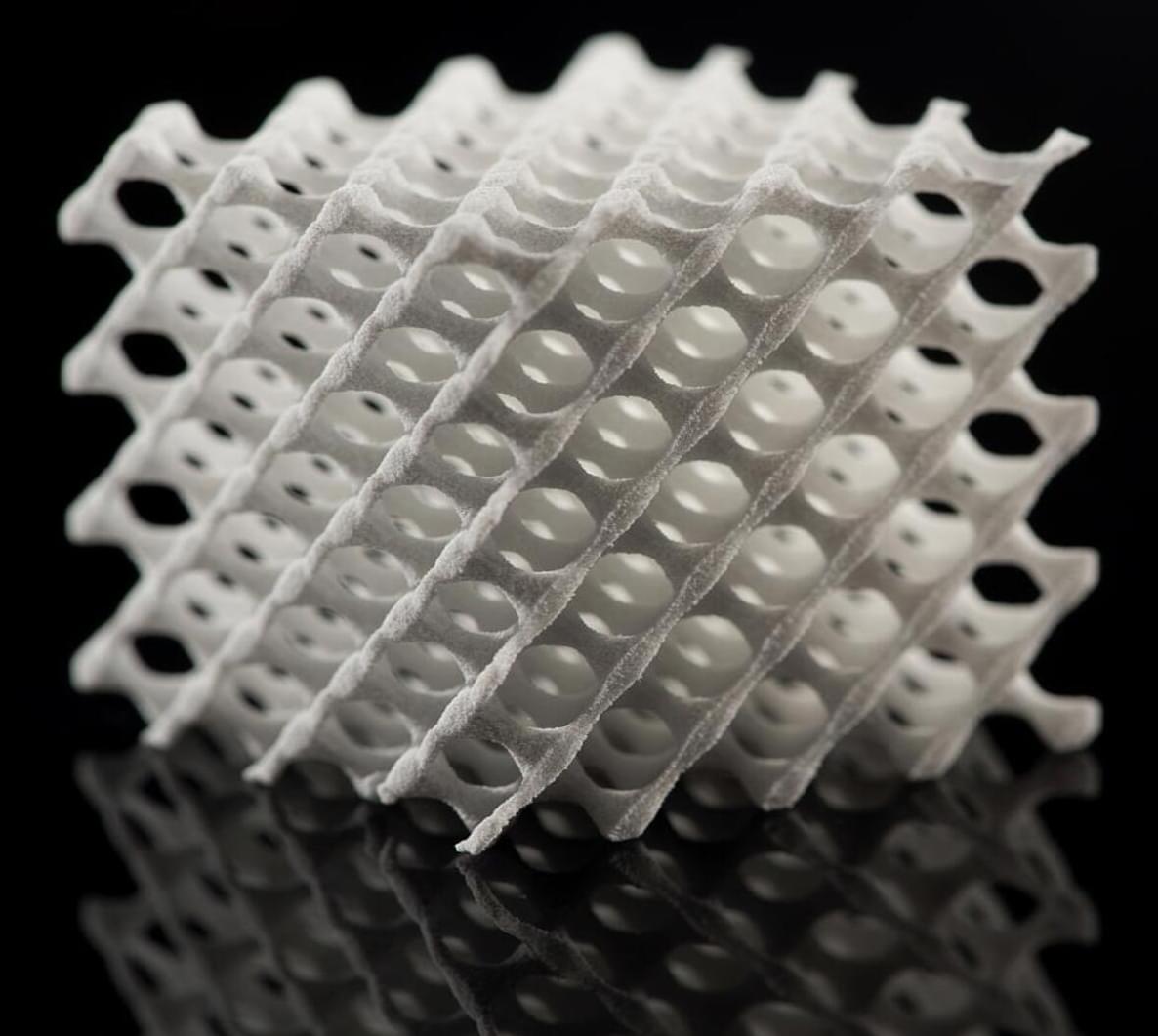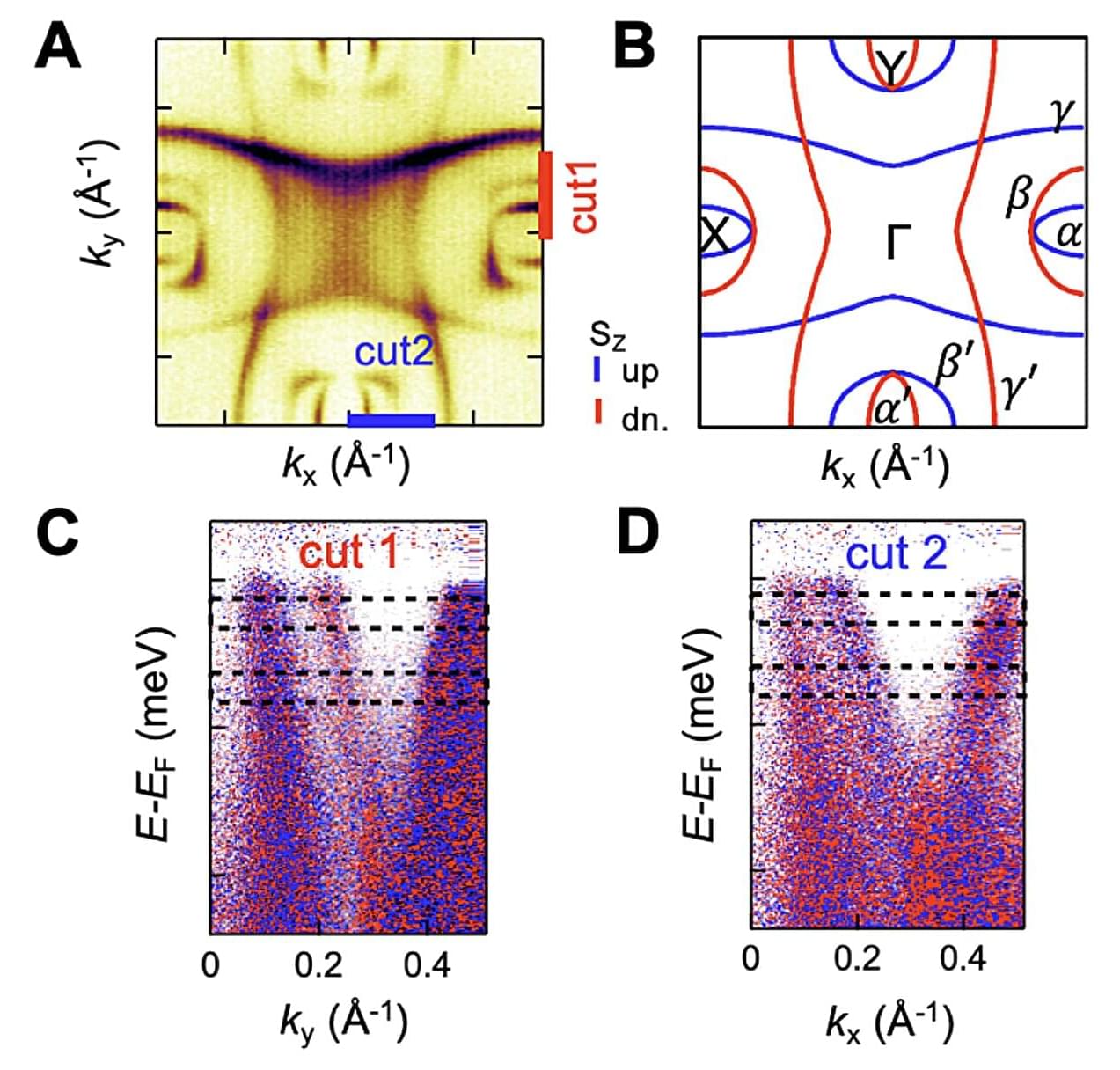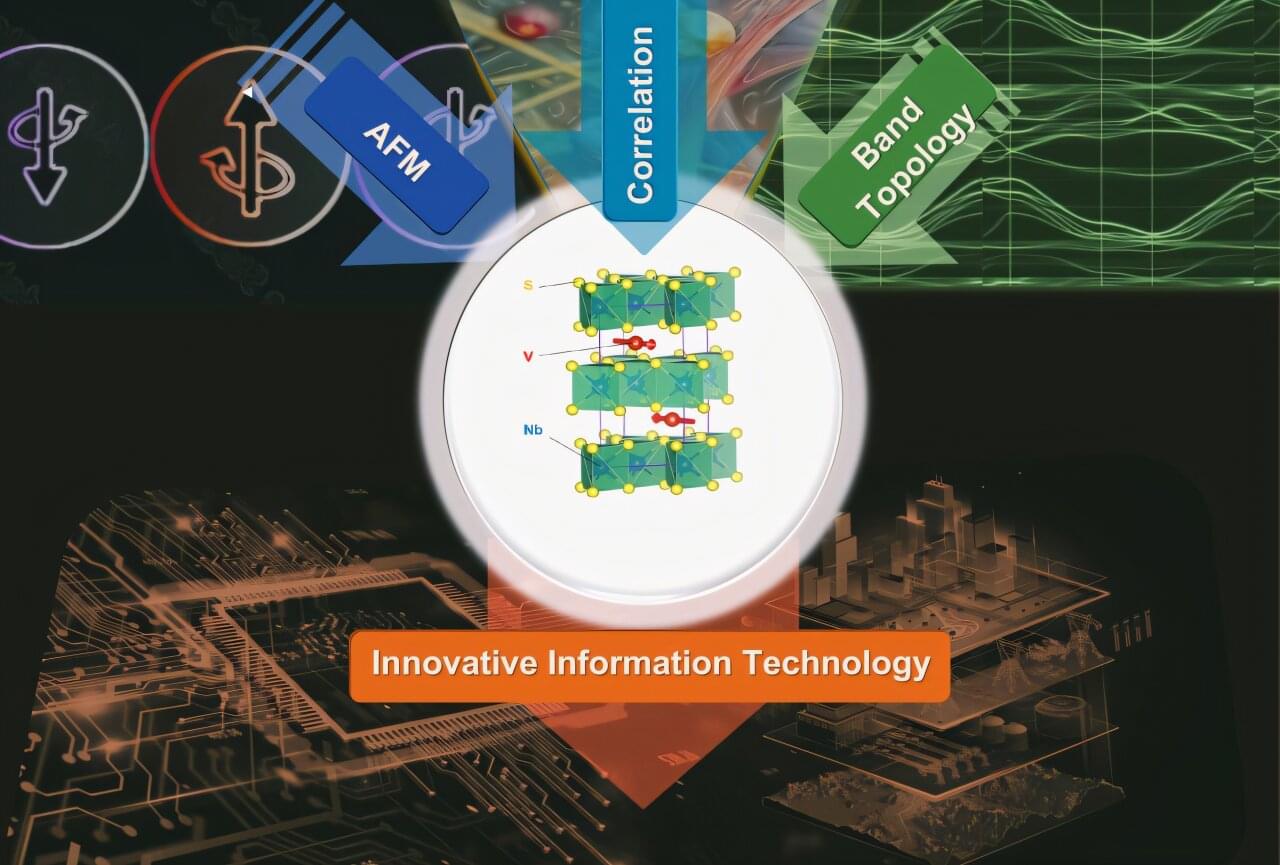Graphene can support 50,000 times its own weight and can spring back into shape after being compressed by up to 80%. Graphene also has a much lower density than comparable metal-based materials. A new super-elastic, three-dimensional form of graphene can conduct electricity, and will probably pave t
Category: materials – Page 2
When an electric current passes through some materials, it generates a voltage perpendicular to the direction in which the current is flowing and of an applied magnetic field. This physical phenomenon, known as the anomalous Hall effect, has been linked to the intrinsic properties of some materials.
The efficiency with which a longitudinal current drives a transverse spin-polarized current in these materials is referred to as the anomalous Hall angle (θA). In many conventional magnetic materials, this angle is typically very small, which in turn limits the sensitivity of sensors and other devices developed using these materials.
Researchers at the Chinese Academy of Sciences have introduced a new mathematical model that allows them to modulate the θA in the magnetic topological semimetal Co3Sn2S2.
A NIMS research team has developed an approach capable of accurately and rapidly predicting the degradation behavior of electrocatalysts used in water electrolyzers by employing data assimilation—a method commonly employed in weather forecasting.
After analyzing only 300 hours of experimental data, this approach accurately predicted the degradation of an electrocatalytic material occurring after approximately 900 hours of water electrolysis. This approach is able to accelerate and simplify the comparison of degradation properties among various electrocatalytic materials, potentially facilitating investigations into their degradation mechanisms and expediting the development of more efficient, economical and durable electrocatalytic materials.
The work is published in the journal ACS Energy Letters.
A multidisciplinary team at the University of California, Berkeley, the Georgia Institute of Technology and the Hong Kong University of Science and Technology has developed a stretchable, self-healing lithium battery that remains stable after 500 charge/discharge cycles. In their paper published in the journal Science Advances, the group describes how they developed the battery and possible uses for it.
Over the past several years, scientists have been developing batteries for different types of applications. One such type is the stretchable battery, which could be used in wearable electronics. Recently, a team at Linköping University announced that they had developed a fluid battery that can take any shape, allowing for its use in a wide variety of applications. In this new study, the team at UC Berkeley has developed a stretchable battery that also heals itself.
To make the new battery, the research team started with a zwitterionic polymer that had both a positive and negative charge. With such polymers, water molecules bond with the charged parts while the lithium ions are attracted by the negative parts of plastic. The arrangement allows water to be tightly bound in the battery, reducing the risk of it splitting when voltage is applied, while still allowing lithium ions to be released when desired.
Indentation in bilayer epitaxial graphene induces its reversible transformation into a diamond-like structure with stiffness and hardness comparable to diamond.
“In solid matter, heat is transferred both by mobile charge carriers and by vibrations of the atoms in the crystal lattice,” Garmroudi says, emphasizing that researchers have devised advanced techniques to engineer thermoelectric materials with exceptionally low thermal conductivity over the past few decades.
“In thermoelectric materials, we mainly try to suppress heat transport through the lattice vibrations, as they do not contribute to energy conversion,” he adds.
Garmroudi recalls developing the novel hybrid materials during his research stay in Tsukuba, Japan, supported by the Lions Award and carried out at the National Institute for Materials Science as part of his work at TU Wien (Vienna University of Technology).
🚀 Q: What are the key features of SpaceX’s new flame trench at Pad B? A: The 80% complete flame trench features 5 diverter supports, 2 flame buckets, and water pipes for cooling and exhaust management, enabling rapid Starship launch turnarounds by up to 70% compared to pads without a trench.
🔥 Q: How does the flame trench manage Superheavy booster exhaust? A: It channels 3,000°C exhaust from 33 Raptor engines using a 10-20m deep, 10-20m wide, refractory-lined concrete channel with a steel deflector to reduce recoil damage by 60%.
💧 Q: What role does water play in the flame trench system? A: The trench uses 1M L water per launch to cool the trench, absorb 10–20 MJ/m² heat flux, and reduce 30–50% acoustic energy, preventing structural cracks or instability of the rocket.
Traditionally, magnetic materials have been divided into two main categories: ferromagnets and antiferromagnets. Over the past few years, however, physicists have uncovered the existence of altermagnets, a new type of magnetic material that exhibits features of both antiferromagnets and ferromagnets.
Altermagnets are magnetic materials that have no net magnetization (i.e., their atomic magnetic moments cancel each other out), like antiferromagnets. Yet they also break spin degeneracy (i.e., the usual energy equality between spin-up and spin-down electrons), similarly to ferromagnets.
Researchers at Songshan Lake Materials Laboratory, Southern University of Science and Technology, the Hong Kong University of Science and Technology and other institutes in China recently set out to realize a layered altermagnet that can generate non-collinear spin current. The room-temperature metallic altermagnet they unveiled was outlined in a paper published in Nature Physics.
An international research team led by Mayukh Kumar Ray, Mingxuan Fu, and Satoru Nakatsuji from the University of Tokyo, along with Collin Broholm from Johns Hopkins University, has discovered the anomalous Hall effect in a collinear antiferromagnet.
More strikingly, the anomalous Hall effect emerges from a non-Fermi liquid state, in which electrons do not interact according to conventional models. The discovery not only challenges the textbook framework for interpreting the anomalous Hall effect but also widens the range of antiferromagnets useful for information technologies.
The findings are published in the journal Nature Communications.
How can fungi be used as building construction materials? This is what a recent study published in Cell Reports Physical Science hopes to address as a team | Technology
